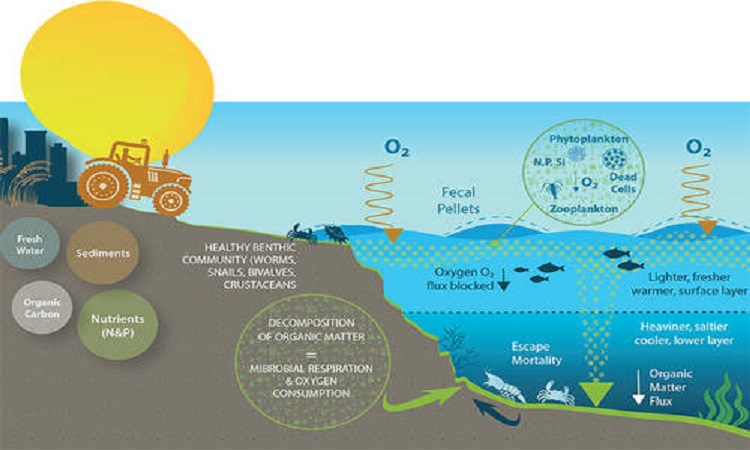Declining oxygen in world’s ocean shows threat to ocean health
Since the 1960s, the area of low oxygen water in the open ocean has increased by 4.5 million km2 and over 500 low oxygen sites have been identified around the world.

Oxygen is declining in the ocean. Since the 1960s, the area of low oxygen water in the open ocean has increased by 4.5 million km2 and over 500 low oxygen sites have been identified around the world. Recently published by the IOC Expert working group Global Ocean Oxygen Network (GO2NE), the policy brief “The ocean is losing its breath: Declining oxygen in the world’s ocean and coastal waters” seeks to inform policymakers of the latest scientific data and conclusions, in a bid to ensure informed decision-making to counter this rising threat to ocean health.
Deoxygenation (a decline in oxygen) occurs when oxygen in water is used up at a faster rate than it is replenished. Both excess nutrients and increasing temperatures shift the balance between oxygen reduction and addition, worsening deoxygenation. In order to address this worldwide phenomenon, research, monitoring and management must be closely integrated with policy decisions that affect our shared ocean.
Although it is known that oxygen is critical to the biology, ecology and biogeochemical cycling of the ocean, and to the influence of the ocean on the Earth’s climate, major uncertainties remain around the ultimate effect of the ocean’s deoxygenation. Continued research, observation analysis and community engagement are required to not only detect the spatial and temporal extent of ocean deoxygenation but also to advance the understanding of underlying processes to develop adaption and mitigation strategies.
The GO2NE policy brief is structured around fifteen simple facts about ocean deoxygenation that policy-makers should take into account when addressing the issue through policies and legislation. Brief sections unveil the most up-to-date scientific knowledge, identify the remaining gaps and recommend specific steps that would be required in a general strategy for restoring the ocean’s oxygen and minimizing the impacts of deoxygenation.
Key recommendations include reducing greenhouse gas emissions and nutrient inputs into coastal waters, and linking climate change to nutrient reduction strategies – two fields currently considered separately within the policy world. The policy brief highlights the role of marine spatial planning – “urban planning for the ocean” – and fisheries management strategies in addressing deoxygenation vulnerabilities and protecting affected species and habitats. Ultimately, one of the most urgent needs is to ensure that research, management and policy actions are developed in concert, with an interdisciplinary approach.
GO2NE is an expert group established in 2016 under UNESCO’s Intergovernmental Oceanographic Commission. The group is committed to providing a global and multidisciplinary view of deoxygenation, with a focus on understanding its multiple aspects and impacts. GO<sub>2</sub>NE offers scientific advice to policy makers to counter this concerning trend and to preserve marine resources in the presence of deoxygenation. Currently, the members of the core working group represent 21 institutions in 11 countries.
ALSO READ
"Had 10 hours of being actually waterboarded": 'GOT' actor Hannah Waddingham recalls shooting for challenging sequence
BJP govt spent Rs 1,200 crore for drinking water, Rs 64 crore for MGNREGA in Uttarakhand: BJP chief Nadda
BRIEF-S&P Says Thames Water Class A & B Debt Ratings Lowered On Delayed Shareholder Support Outlook Negative
'What is price of human life in this city', asks HC; takes note of death of 2 kids in water tank
Cabinet agrees on key steps to implement Local Water Done Well










